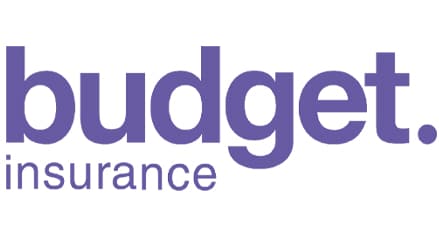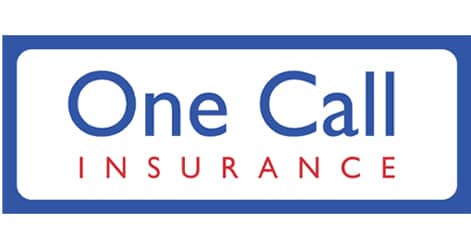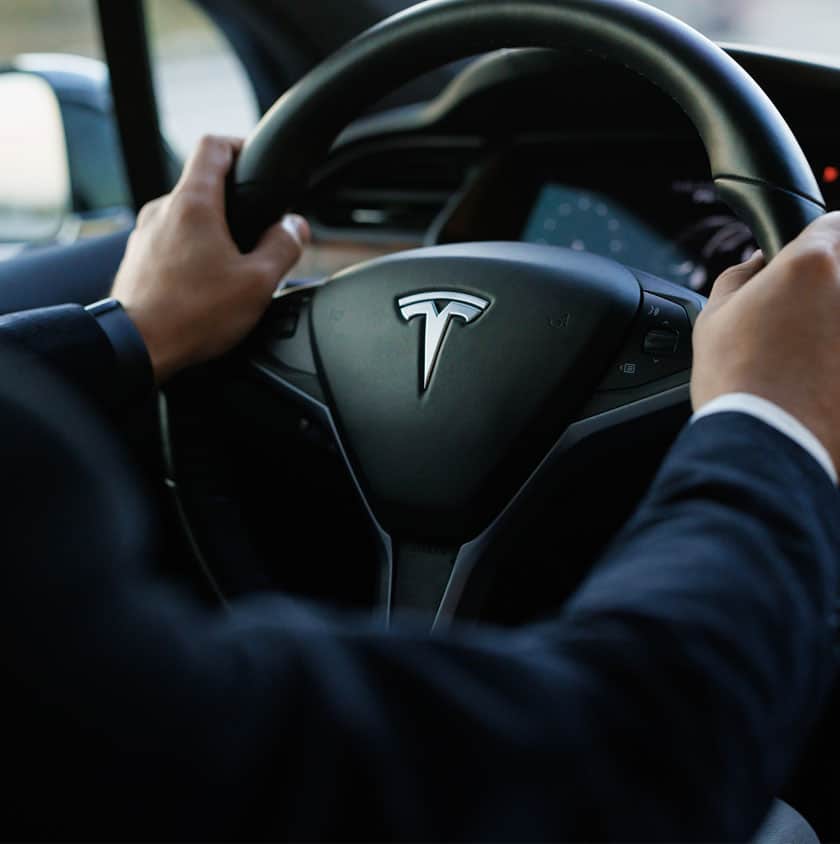
Tesla Insurance
Compare Tesla Car Insurance Quotes
- Compare 120+ insurers
- You could save up to £515*
- Find a great deal today

Compare affordable Tesla car insurance from top UK’s leading car insurers including:
Why Compare Telsa Car Insurance Quotes at SimplyQuote.co.uk?
Tesla insurance costs vary significantly between models and drivers—comparing quotes is the easiest way to find cover that fits your vehicle, usage, and budget.
With their high-tech features, premium value, and electric drivetrains, Teslas don’t fit the mould of a standard petrol or diesel car—and insurers treat them differently. Whether you drive a Model 3, Y, S or X, your premium can be affected by everything from battery size to Autopilot use and repair access.
At SimplyQuote.co.uk, we’ve partnered with Quotezone to help Tesla owners compare policies from FCA-regulated insurers in one simple form. You’ll get tailored quotes based on your driving habits, cover needs, and the specific Tesla model you own.
Some insurers specialise in EVs and offer better protection for high-value components like the battery or on-board tech. Others focus on affordability or offer discounts for low-mileage drivers, EV club members, or those with home charging units.
By comparing Tesla car insurance through SimplyQuote.co.uk, you can avoid generic policies that miss the mark—and instead choose a provider that understands how your Tesla is used, maintained, and repaired.
Who Are Tesla?
Tesla is a premium electric vehicle manufacturer known for blending cutting-edge technology with high performance and minimalist design.
Founded in 2003 in California, the company entered the UK market in the early 2010s and quickly became a dominant force in the electric vehicle (EV) space.
Tesla’s appeal lies in more than just zero emissions. Their cars are packed with industry-leading software, over-the-air updates, and unique features like Autopilot, Sentry Mode, and regenerative braking systems. As a result, Tesla drivers often view their cars less like traditional vehicles and more like connected tech devices on wheels.
The UK model lineup currently includes:
| Model | Type |
|---|---|
| Model 3 | Executive saloon |
| Model Y | Mid-size SUV |
| Model S | Luxury saloon |
| Model X | Premium SUV |
Each model brings a different insurance profile. The Model 3, for example, is more affordable and widely driven, while the Model S and X are higher value, lower volume vehicles with more complex parts and higher repair costs.
Understanding who Tesla is and how they build their cars helps explain why their insurance needs are different. From battery protection to access to Tesla-approved repair centres, insuring a Tesla isn’t just about price—it’s about precision.
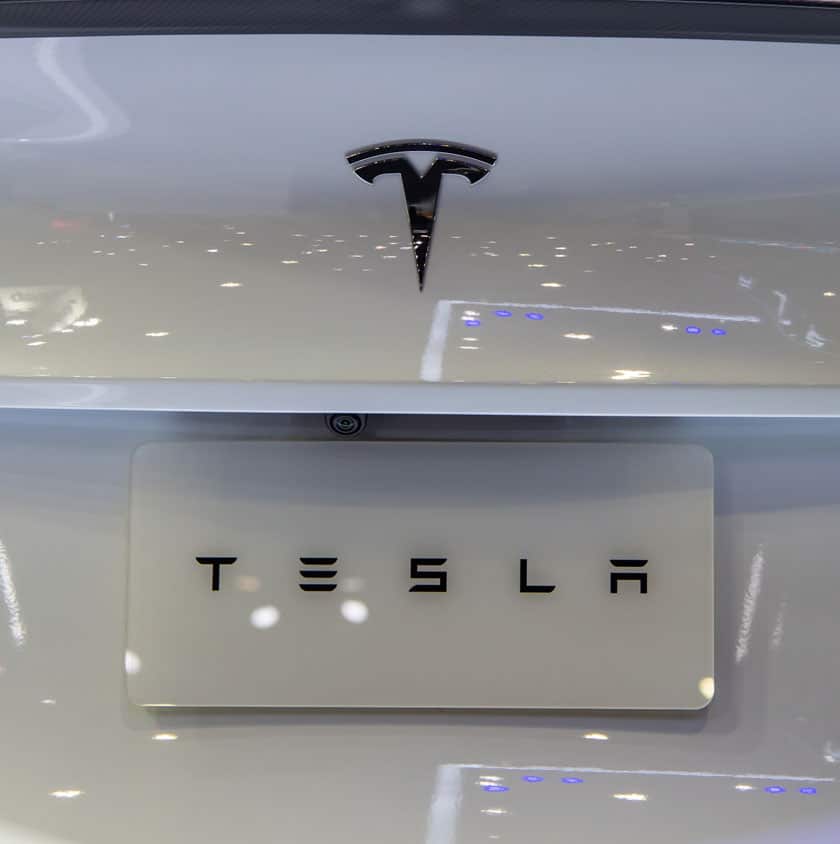
What Do I Need To Get A Quote?
To get a Tesla car insurance quote, you’ll need some basic information about your vehicle, how you drive it, and your personal driving history.
It’s quick to complete and doesn’t require any paperwork upfront—just accurate answers.
Here’s what you’ll usually need:
- Your car’s registration number – This allows insurers to pull details like the model, variant (Standard, Long Range, Performance), and year of manufacture.
- Your intended use – Is your Model 3 used for commuting, occasional leisure trips, or business? Usage classification can affect your quote.
- Where it’s kept overnight – Tesla owners who park in a garage or on a private drive may pay less than those using on-street parking.
- Annual mileage – Lower mileage often equals lower premiums. With Teslas, it’s also tied to battery usage and service expectations.
- Modifications – If you’ve changed the wheels, tinted the windows, or fitted a body kit, insurers need to know—even if it’s cosmetic.
- Driver details – Licence type, how long you’ve held it, any penalty points or claims, and your no-claims bonus.
Some insurers also ask if your car is fitted with a dashcam, if you’re part of a Tesla or EV drivers’ club, or whether you’ve installed a wall box charger at home—all of which can affect your policy options or discounts.
You won’t need to upload documents to compare quotes. Once selected, most policies are delivered instantly via email, so you can get covered the same day.
Why Should I Consider Tesla-Specific Car Insurance Cover?
Because Teslas are electric, high-tech, and expensive to repair, generic car insurance policies often don’t offer the level of protection these vehicles need.
A Tesla-specific policy is more likely to reflect how these cars are built, driven, and maintained.
Standard policies may not account for:
- Battery replacement costs – The battery is the most expensive component in a Tesla. Not all insurers cover battery damage fully, especially from fire or water ingress.
- Autopilot & software systems – Some insurers are unfamiliar with Tesla’s driver-assistance features or how they affect accident claims.
- Tesla-approved repair networks – Repairs can’t always be carried out at regular garages. Specialist cover often ensures work is done at Tesla-certified centres using OEM parts.
- Home charging equipment – Policies that cater for EVs are more likely to include cover for stolen or damaged wall boxes and charging cables.
- High market value & theft risk – Teslas attract attention. Specialist policies often include enhanced theft protection or keyless entry safeguards.
If your Tesla is on a lease or PCP agreement, your finance provider might also require minimum levels of cover, OEM repair clauses, or GAP protection. A Tesla-aware policy can help you stay compliant while avoiding out-of-pocket costs during claims.
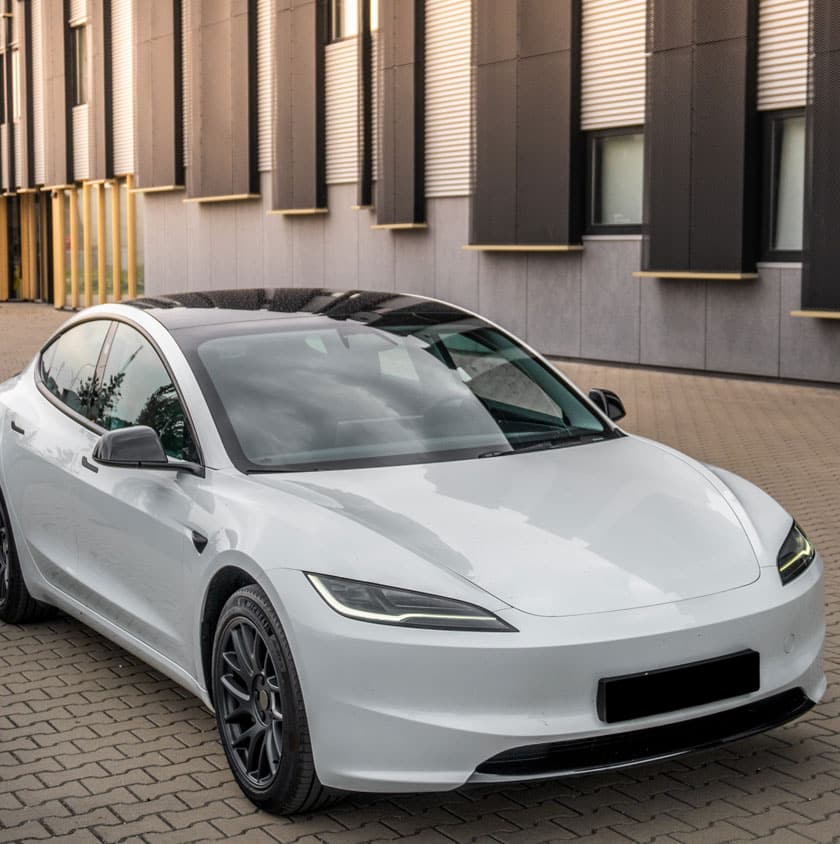
What Does Telsa Car Insurance Cover Include?
Most Tesla insurance policies include standard cover like accidental damage, third-party liability, and theft — but specialist policies often go further, offering protection for your battery, charging gear, and advanced tech systems.
Here’s what’s usually covered in a comprehensive Tesla policy:
- Third-party liability – Covers damage to other people’s property or injury in an accident you cause.
- Fire and theft – Includes cover if your Tesla is stolen or damaged in a fire.
- Accidental damage – Repairs for your Tesla after a crash, even if you’re at fault.
- Battery cover – Often includes fire, accidental damage, or short-circuit protection for the battery — the most expensive part of the car.
- Charging cables and wall boxes – If your charger or portable cable is stolen or damaged, this may be covered under EV-specific insurance.
- Autopilot system support – Some insurers offer guidance and claims support for incidents involving driver-assist technology.
- Repairs with OEM parts – Repairs carried out by Tesla-approved garages using original parts, especially valuable on leased or high-spec vehicles.
- Windscreen and glass – Includes panoramic roofs and sensors embedded in Tesla windscreens.
- Courtesy car – Offered while yours is being repaired, although may vary by provider.
Some policies will also include legal expenses, key cover, or enhanced personal belongings cover — particularly helpful if you keep laptops or tech in your Tesla.
Always check the policy wording, especially when it comes to batteries, charger liability, and whether repairs are guaranteed at Tesla-certified centres.
What’s Not Included?
Tesla insurance typically excludes undeclared modifications, battery wear and tear, and non-standard vehicle use—especially if the car is used commercially or the driver fails to disclose key details.
Even with a comprehensive policy, there are limits to what’s covered:
- Battery degradation – Your insurance won’t cover loss of battery performance over time, as this is classed as natural wear.
- Unapproved modifications – If you’ve tinted the windows, fitted aftermarket rims, or altered the software (including Autopilot settings), it must be declared. Otherwise, your claim may be refused.
- Commercial use – Using your Tesla for delivery driving or rideshare without business cover can void your insurance. Most policies only cover social, domestic, and commuting use by default.
- Unattended charging risks – If your car is left unlocked, with cables trailing or doors open during a charge, some insurers may reject theft claims on negligence grounds.
- Charging equipment wear – Like tyres or brake pads, wear-and-tear to charging cables, wall boxes or sockets is generally not covered.
- Autopilot misuse – Claims arising from improper use of Autopilot or Full Self-Driving (FSD) features may be challenged, especially if misuse is proven.
Insurers vary in how they handle these exclusions. That’s why it’s worth comparing Tesla-friendly policies where the small print has been shaped around how electric cars are actually used—not how petrol cars were in 2005.
How Much Does Tesla Car Insurance Cost?
Tesla insurance premiums in the UK typically range from £900 to over £2,400 per year, depending on your model, postcode, driving history, and how the car is used.
The more powerful or high-spec the Tesla, the higher the insurance group — and the bigger the premium.
While a standard Model 3 may cost just under £1,000 a year to insure, a long-range or Performance variant can push well beyond that. Similarly, Tesla Model X and Model S premiums are considerably higher due to their value, size, and specialist repair requirements.
EV-specific factors also affect the quote, such as:
- Battery replacement cost
- Access to Tesla-approved repair centres
- Availability of parts and sensors
- Charging location (public or private)
- Annual mileage and range use
Here’s a rough guide based on UK averages:
| Tesla Model | Segment | Est. Annual Premium |
|---|---|---|
| Model 3 | Executive Saloon | £900-£1,500 |
| Model Y | Mid-size SUV | £1,000-£1,600 |
| Model S | Luxury Saloon | £1,300-£2,200 |
| Model X | Premium SUV | £1,400-£2,400+ |
Drivers under 30, those in higher-risk areas, or anyone with points on their licence should expect to pay at the upper end. Modified Teslas, even with cosmetic changes, can also attract higher premiums.
The only reliable way to find your best price? Compare electric vehicle quotes tailored to your vehicle, use, and risk profile — not just the badge on the bonnet.
How Can I Save Money On Tesla Insurance?
You can reduce your Tesla insurance premium by improving security, lowering risk, and tailoring your cover to how you actually drive.
Because Teslas are high-value EVs, even small adjustments can lead to big savings.
Here are five ways to bring your premium down:
Install extra security features
Teslas are already well-equipped, but adding a steering lock, dashcam, or garage storage can help lower your risk profile—especially in high-theft postcodes.
Limit your mileage
If you mostly drive locally or only use your Tesla on weekends, make sure your estimated mileage reflects that. Many insurers reward lower usage.
Join a Tesla or EV driver’s club
Some providers offer discounts to members of official Tesla Owners UK or broader EV clubs. It’s a small move that can unlock specialist deals.
Pay annually, not monthly
Monthly payments often include interest. Paying for your policy in full can shave 5–10% off the total cost.
Adjust your excess
Increasing your voluntary excess (what you pay if you claim) can reduce your premium—just make sure it’s still affordable in the event of an accident.
As always, the biggest single saving comes from comparing policies. Not all insurers rate EVs the same way—and some are better equipped to price Tesla risk fairly. The more tailored your quote, the more likely you are to pay only for what you truly need.
How To Compare Tesla Car Insurance At SimplyQuote.co.uk
Comparing Tesla insurance quotes with SimplyQuote.co.uk is fast, free, and built around the unique needs of electric car drivers.
Whether you drive a Model 3, Y, S or X, you’ll see tailored policies that match your risk profile, driving habits, and the features of your specific Tesla.
Here’s how it works:
- Tell us about your Tesla
Enter your registration or select your model, battery type (e.g. Standard Range Plus or Long Range), and whether the car is owned, leased or on finance. - Add usage and driver details
We’ll ask how the car is used (commuting, leisure, business), your postcode, no-claims history, and if the vehicle is parked securely or charged at home. - Choose your cover level
Select third-party, third-party fire and theft, or fully comprehensive cover. You can also add optional extras like legal cover, breakdown, and key protection. - Compare your results
View quotes from FCA-regulated UK insurers. See who includes battery cover, charger theft protection, and Tesla-approved repair guarantees. - Buy online and get covered instantly
Most insurers email your documents immediately — so you can get behind the wheel with confidence, knowing your Tesla is fully protected.
It takes just a few minutes, and there’s no pressure to buy. You won’t be asked for payment or documentation unless you choose a quote.
*51% of consumers could save £515.24 on their Car Insurance. The saving was calculated by comparing the cheapest price found with the average of the next six cheapest prices quoted by insurance providers on Seopa Ltd’s insurance comparison website. This is based on representative cost savings from December 2024 data. The savings you could achieve are dependent on your individual circumstances and how you selected your current insurance supplier.
Frequently Asked Questions
Yes, Tesla’s tend to cost more to insure than average cars. Their high value, repair complexity, and EV-specific risks mean premiums can start around £900 and go beyond £2,000 for some models.
Not always, but it helps. Most insurers cover Autopilot under standard terms, but some Tesla-aware policies offer better support for accidents involving driver-assist systems.
It depends on the policy. Comprehensive Tesla insurance often includes accidental damage or fire affecting the battery, but wear and performance loss are usually excluded.
Not if you want approved work. Some insurers require repairs at Tesla-approved body shops to ensure OEM parts and protect warranty terms—especially for leased cars.
You may be covered under EV-specific insurance. Some policies include theft or damage to portable charging equipment and wall-mounted chargers—check the extras section.
Yes. Most insurers accept leased Teslas, though you may need to meet minimum cover requirements, like including GAP insurance or OEM repair clauses.
Yes, sometimes. Even cosmetic mods like alloy changes or tinted windows must be declared. Not all insurers cover modifications, so comparison is key.
Not always. Some comprehensive policies include EV roadside assistance as standard, but others offer it as an add-on—especially for home charger faults or flat batteries.






